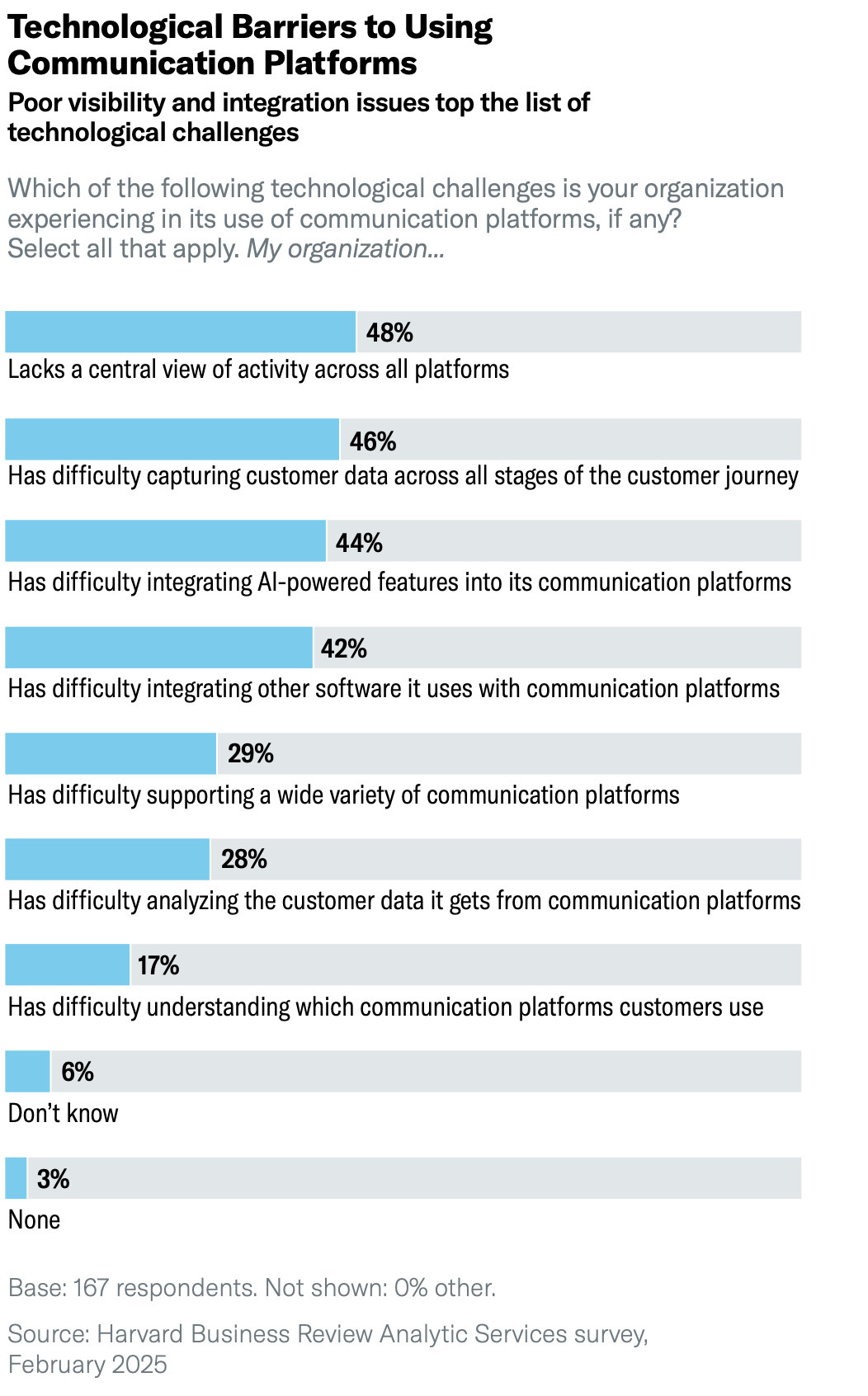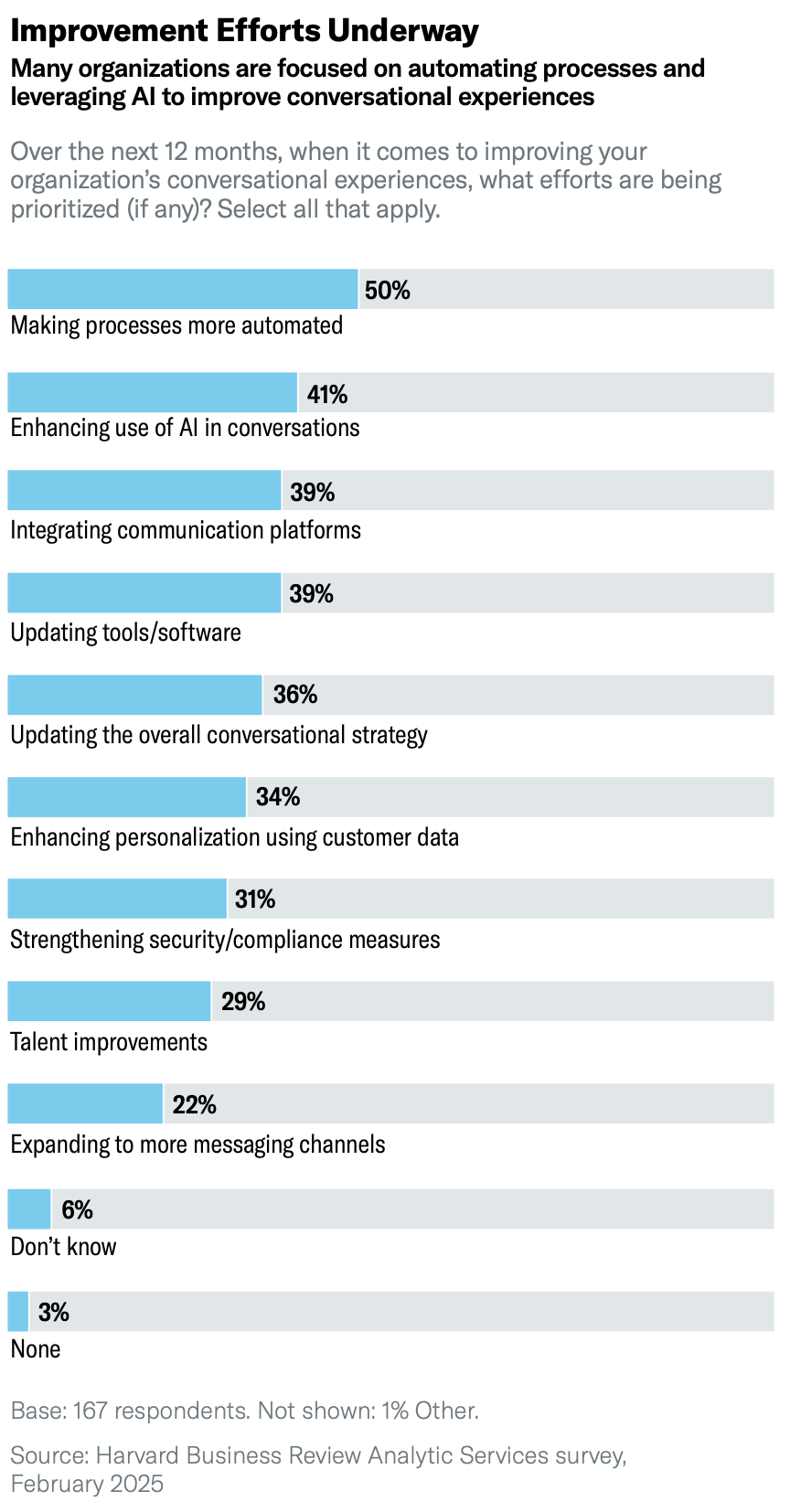July 9, 2025 • 5 min read

A new study by Harvard Business Review Analytic Services and Infobip surveyed 167 global business leaders to evaluate the current state of conversational customer experiences. While nearly all respondents agree on the strategic importance of AI-powered conversations, most admit their organizations fall short in execution. From fragmented tech stacks to lack of clear tone guidelines, the report surfaces the core reasons why human-like, contextual interactions remain rare, and why only 11% of companies believe their conversational AI actually delivers on that promise.
Key Findings from the Report
93% of business leaders say delivering positive conversational experiences is extremely or very important
87% believe conversations should feel meaningful, contextual, and human-like
Only 36% rate their organizations as effective at delivering conversational experiences
Just 11% say their AI-driven conversations currently feel human
79% use at least four channels for customer conversations; 31% use six or more
48% struggle with lack of visibility across communication platforms
46% say they can’t capture the full customer journey
44% face difficulty integrating AI features into current tech stacks
42% cite challenges with integrating messaging platforms and apps
49% lack clear guidelines for conversational tone, brand voice, or agent etiquette
50% say process automation is their top priority in the next 12 months
41% are focused on adding more AI capabilities to their conversations
Most respondents report improved customer satisfaction, trust, and brand perception—but minimal gains in market share or cost savings
Structural Failures Are Undermining Conversational AI
This chart highlights the core breakdowns preventing companies from delivering on the promise of AI-powered conversations. These issues aren’t cosmetic—they’re foundational. Leaders are trying to scale meaningful, human-like experiences on top of disconnected infrastructure. The result: brittle conversations, inconsistent tone, and automation that collapses at the edge of complexity.
Key obstacles include:
48% of organizations lack centralized visibility across communication platforms
46% can’t track customer data consistently across the journey
44% struggle to integrate AI-powered features into their existing stack
42% face challenges connecting external tools like CRM or chat systems
49% don’t have standardized guidelines for tone, voice, or conversation flow
The takeaway:
Organizations are deploying more channels and more AI—but without stitching them together. Conversations feel robotic not because the AI is undertrained, but because it’s operating inside broken or siloed systems. Until the foundation is unified, the output will continue to underwhelm.

Leaders Are Targeting the Right Problems—Now They Have to Execute
This chart shows where organizations are placing their focus over the next 12 months. Encouragingly, their top priorities directly mirror the structural issues surfaced earlier: automation, AI enhancement, and platform integration. Leaders aren’t blind to what’s broken—but identifying the gaps is only the beginning.
Priority actions include:
50% are making processes more automated
41% are enhancing the use of AI in conversations
39% are working on integrating communication platforms
39% are updating outdated tools and software
36% are revising their overall conversational strategy
34% are advancing personalization through customer data
31% are strengthening security and compliance
29% are focused on talent improvement and enablement
The takeaway:
These initiatives are aimed in the right direction, but success depends on whether companies can move beyond surface-level updates. Updating software or plugging in AI tools won’t drive real results unless the underlying systems, teams, and workflows are coordinated. The execution gap—not the strategy—is what continues to stall conversational AI maturity.

The CXF Take
This report confirms what many CX leaders have long suspected: conversational AI is still largely underperforming. Despite near-universal agreement on its importance, most organizations lack the infrastructure, integration, and internal alignment to make it work. Leaders are deploying channels faster than they’re building connective tissue across them—resulting in siloed conversations and clunky automation. The fact that only 11% believe their AI sounds human is a warning shot: customers are noticing the gap. To move forward, companies must prioritize unified platforms, invest in smart handoff strategies, and establish clear standards for tone and personalization. Conversational AI is only as effective as the context it’s trained on—and most companies aren’t feeding it enough.
